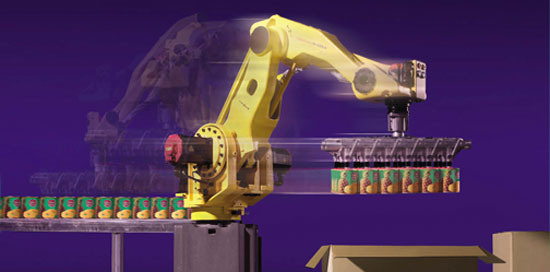Your shopping cart is currently empty.
The advantages or robotic packing cells:
- Packing Flexibility: When your line is responsible for more than one type of load, rigidity isn't an option. Often, these applications require a complex integration that may have made robotics too expensive or difficult in the past. Today, with tooling (end of arm) advances, you can package varying loads by type, size, or other factors into cartons or other media and count on a high degree of efficiency.
- Speed: Robots don't waste motion or time when it comes to filling out a case with product. They don't require rest breaks, don't need to be home for dinner, and allow shift flexibility that is unheard of. They can place the load faster than humans can, and with great accuracy.
- Accuracy in case packing: We're only human, and we are prone to mistakes. Robots don't have that issue - with the correct programming, visual identification systems, and setup, a packing robot can far outperform its manual alternatives.
- Cost Savings: Automation cuts costs, plain and simple, across the board and throughout an entire enterprise. In packing systems, whether in a distribution or factory application, this is amplified because the robotic system reduces the high degree of manual, low-value-add involvement. Labor and insurance costs can be radically reduced. Robots don't get sick or take vacations, giving your operation more ability to schedule production without as many "moving parts" as a manual system can tend to produce. The result is a less costly, more efficient case packing system.





